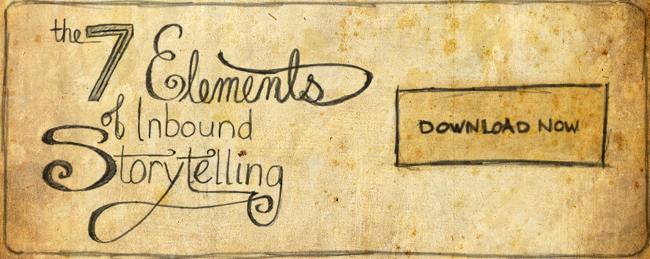 Opinions are like blogs: Everyone has one.
Opinions are like blogs: Everyone has one.
In fact, most of the business world has finally caught on to the fact that in order to succeed in a post-outbound world, you need great content.
But what happens once everyone has caught on and businesses are blogging simply to stay healthy, kinda like eating their green beans?
What happens is you get a ton of boring, uninspired, mediocre content polluting your RSS feed.
As Maximus famously proclaims in Gladiator, “Are you not entertained?! Is this not why you are here?”
Well, no.
We’re here to be inspired, right? I mean, I’m not talking the last twenty minutes of Rudy inspired, but rather inspired to read more, and maybe buy something. We have a challenge. A question. A need or even a want. And we're looking for that moment of inspiration to help make our purchase decision easier.
Somewhere along the way of this mass information age, many forgot this. They forgot that storytelling is the main ingredient for inspiration.
It’s why we cry at the end of Forrest Gump. It’s why we cheer at the end of Rocky (all six of them). It’s also why some of us buy Dunkin’ Donuts over Starbucks (or vice versa).
We’re here to be told a story. And in the process, be inspired to take action or behave in certain ways. And while storytelling goes far beyond just your blog posts, it’s often your most shared resource; therefore, it’s the best place to start.
Story vs. Article
Let's consider the difference between marketers and journalists. Journalists remove themselves from articles to ensure objectivity -- but marketers? Marketers should be inserting themselves into their stories. That's what differentiates an article, from a story.
Great brand stories are not objective. In fact, the most successful ones are highly subjective.
Is Snapple really made from the best stuff on earth? Of course not. However, millions of people buy into this story every single day.
Shift your focus from writing articles to telling more stories. Start by asking yourself, "What am I trying to accomplish for my customers?" Then consult your buyer personas and focus on key personality traits to identify the type of tone and language that will be most effective at appealing to them.
Get creative. Insert yourself into each story. Detail your experiences.
This makes you and your brand much more relatable.
Hyperbole vs. Jargon
Often we get caught up in those industry buzz phrases we think are necessary in order to attract business.
"Achieve Your Goals and Experience an ROI."
... As opposed to those other companies that vow to not achieve your goals and guarantee no ROI?
No company is saying that. As a result, we all end up saying the same thing. How are you supposed to separate yourself from the competition with a strategy like that?
No one understands this concept better than the household brands we all know and love. Part of the reason we do know and love them is because we identify with their story.
Does America really run on Dunkin'?
Is Folgers really the best part of waking up?
Probably not. However, we buy into these stories because of the way they make us feel.
A healthy dose of hyperbole never hurt anyone. In fact, it's highly effective in telling a remarkable story and differentiating your brand.
Experience vs. Words
Stories don't always have to be about words.
In fact, great storytelling encompasses your entire brand experience, not simply what is written about or said.
Take Starbucks, for instance -- I know, I know, I've got caffeine on the mind -- who goes after an entirely different audience than Dunkin' Donuts. This effectively separates them from an already massively successful brand. Starbucks targets a more affluent audience and aims to create a more high-end, "our barista remembers the way you like your coffee," type atmosphere. Everything from the furnishings, to minimal drive-thrus, to a menu most people have a hard time pronouncing, stays consistent with the overall story.
Starbucks customers are willing to wait a little longer. They're even willing to pay a little more.
Is the coffee that much different? Or is it the story and experience these particular customers are buying?
It's certainly debatable, however, these two massively successful coffee chains have managed to dominate completely separate markets and attract two different audiences all through the act of storytelling.
So while many of us may not be able to match their marketing budgets and overall reach, we can certainly learn a lot from the manner in which household brands separate themselves from the noise with hyperbolic, unique brand stories.
Developing Your Story
In developing a unique story, consider your buyer personas and focus on both personality and behavioral traits in order to develop a story that resonates.
Who are you trying to attract?
How can you tell a story that inspires them to act?
This story will be the core of your entire marketing strategy.
Your story shouldn't be about what you sell, but rather how you sell it.
This is a guest post by John Bonini (@Bonini84), marketing director at IMPACT Branding & Design. Visit the IMPACT Blog for more content from John and the agency.

